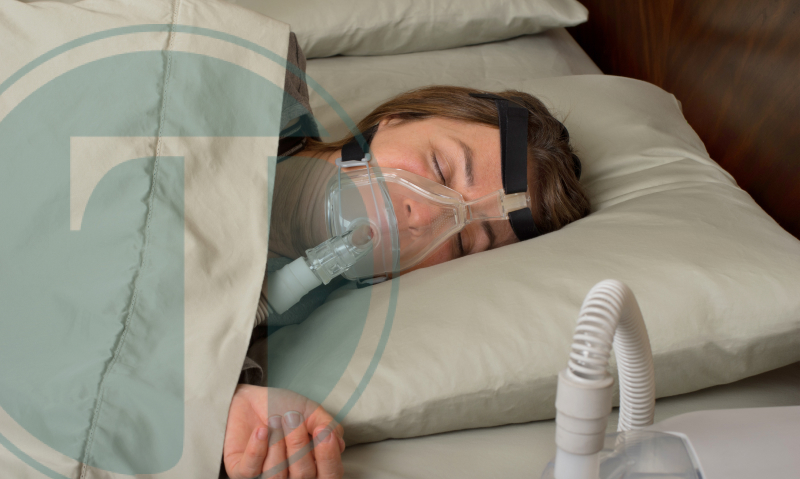5 Ways Dentists Treat Sleep Apnea

Get a good night’s sleep with these dental solutions to help treat sleep apnea.
Most of us need that extra cup of coffee in the morning to get a boost of energy for work and daily life activities. We need to ask ourselves, are we tired because of a random poor night’s sleep or is it a chronic situation that needs a bit of professional attention? Since we’re always on the go when it comes to kids or daily chores, many people don’t realize they actually have a sleep condition that affects their daily lives, nor do they realize that a dentist can help treat sleep apnea.
Fortunately, our team at Tomasik Family Dental are trained to identify clinical symptoms that may be associated with sleep apnea. Oftentimes a primary care physician is not looking for underlying airway issues—not because they don’t care, but because they aren’t told about your sleep interruptions or they don’t look for signs in the mouth. Your dental experts in the Lakeway and Bee Cave communities can help evaluate, treat, and refer you, if needed, to a specialist to treat your signs of sleep apnea.
Here are 5 ways your dentist can help treat sleep apnea.
1. Oral Appliances
Tomasik Family Dental specializes in helping treat patients with sleep apnea using oral appliance therapy. These appliances offer improvement or relief from sleep apnea symptoms. Some of the main appliances used are mandibular advancement devices (MADs) or tongue-retaining mouthpieces.
MADs are a type of appliance that is custom made and looks similar to a sports mouthguard. It works by positioning the lower jaw and tongue slightly forward to open the airway. Oftentimes in an airway obstruction, the lower jaw and tongue is pushed back causing a collapsed airway and obstructed breathing.
A tongue-retaining mouthpiece is an oral appliance that helps keep the tongue in the correct position and prevents it from falling back into the airway during sleep. It also helps prevent you from clenching your teeth, and since the airway is less obstructed, it reduces snoring and sleep apnea episodes.
2. Orthodontics
Most dentists will recommend that all children get an orthodontic evaluation by the age of seven. At this age an orthodontist can evaluate misalignment of the teeth and jaw, detect early problems, and correct them to avoid future complications.
Many people with sleep apnea have a smaller lower jaw, also called retrognathia. This jaw condition is when the lower jaw is set back, almost giving a large overbite appearance. When the jaw is set back from the upper jaw, it can allow the tongue to slip into the airway causing an obstruction.
An orthodontist can help correct this jaw condition early with orthodontic appliances and expansion. Oftentimes young patients will require upper jaw expansion to help create room for teeth, but it also supports better breathing. When not corrected at an early age, patients will often see mild symptoms progress to more severe symptoms, and can develop sleep apnea as they age.
3. Frenectomy
A tongue tie (ankyloglossia) is a condition that restricts a tongue’s range of motion and mobility. Tongue tie symptoms can vary from mild to severe, and many people will go into adulthood not aware they even possess a tongue tie. A tongue tie can affect all areas of one’s life, including eating, sleeping, and speaking.
Your dentists at Tomasik Family Dental in Lakeway and Bee Cave are experts in identifying a tongue tie and evaluating if it needs a release, also called a frenectomy. A frenectomy is a simple procedure that helps release the attachment of the tongue from the floor of the mouth.
4. Worn Down Appliances
At Tomasik Family Dental, we don’t simply just check for cavities. We provide a comprehensive clinical exam to look for dental restorations like fillings, crowns, and prosthetics that are worn down. Worn down teeth can cause your bite to be out of alignment, decreasing the vertical dimension of your mouth, which can cause an aged appearance.
Most importantly, flat teeth is a sign of chronic clenching and grinding, which is often an indication of an airway issue like sleep apnea. If you have worn down teeth, you may be a good candidate for a night guard to help with teeth grinding and clenching. You may be referred to get a sleep study and, if appropriate, a night guard may help avoid stress on your teeth and jaw and help you get a better night’s rest.
5. Myofunctional Therapy
Studies show that myofunctional therapy is an effective tool for people with orofacial myofunctional disorders that include problems with swallowing, speaking, and breathing. Myofunctional therapy is a series of exercises that helps retrain the tongue and facial muscles to allow for nasal breathing and better airflow while sleeping.
These special exercises can train the tongue to sit in the proper position while sleeping to avoid blocking the airway, and reduce the severity of sleep apnea. Dentists and hygienists are trained to look for clinical symptoms of sleep apnea including a tongue tie, worn down teeth, and V-shaped palate to see if a patient is a good candidate for myofunctional therapy.
Your dentist can help you breathe easy while you sleep.
You don’t have to live with disturbed sleep, constant fatigue, and breathing issues. The first step on your journey to a more peaceful slumber is to see your dentist for an evaluation of your symptoms and to determine the most appropriate sleep apnea treatment for your situation. Your dentists at Tomasik Family Dental are experienced in treating patients with snoring and sleep apnea symptoms. . The earlier you get it diagnosed, the more likely the success of treating it, and revitalizing your long term sleep and general health. Call our office to book an appointment or fill out our online appointment form and you’ll be sleeping peacefully in no time!